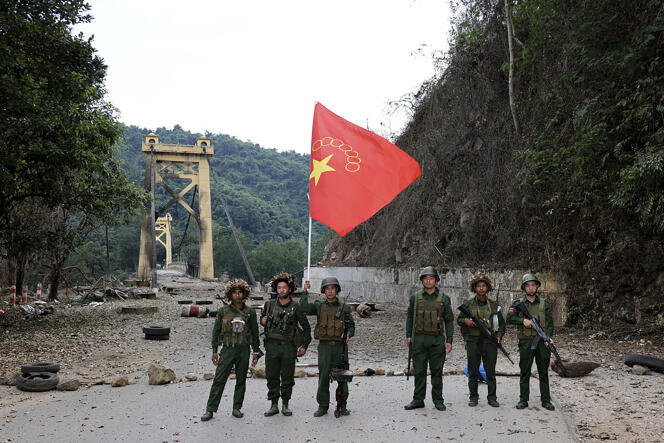For the first time since the coup d’état of February 2021, hope is shifting towards the revolution in Burma. Major cities are the target of resistance offensives, and the Burmese junta has lost control of its border posts most used for trade with China. It resorts to intensive bombing campaigns, challenged by the growing number of land axes cut off by the resistance.
Tension is rising in Naypyidaw, the regime’s fortified capital: rumors of troop movements to better protect the nerve center of military power. In a surreal scene if ever there was one, members of “patriotic” organizations, including monks, demonstrated in Rangoon on November 19, with the full authorization of the regime, against… China and its alleged interference in Burmese affairs.
Armed resistance to the Burmese junta, which was nibbling away without major advances, changed scale in three weeks under the leadership of a handful of ethnic armed groups, these long-term guerrillas from the periphery of the country, who never gave up their arms.
Strategic victory
The event which shook up the configuration of the “Burmese revolution”, as this resistance movement to the 2021 coup d’état self-describes, took place on October 27, with the launch of a vast operation by the guerrillas of the Kokang ethnic group to recover its former stronghold, the town of Laukkai, in the north of Shan State, on the Chinese border. Coming under the control of the army in 2009, it had become a den of cybercrime in the service of the junta.
To date, Kokang guerrillas have disarmed more than 150 military posts and surrounded Laukkai, while two other allied ethnic armies have taken key positions on the routes leading to the Chinese border from Lashio, the capital of Shan State. . The capture in a few days of the military base in the town of Kunlong, on November 12, and its bridge, built on the Salouen River by China, is seen as a strategic victory: it took forty-two days of siege to that the Burmese army wrested it from the hands of the communist guerrillas in 1971-1972.
The dynamic initiated in Shan State has changed the situation on two other fronts, in the neighboring State of Kayah, on the Thai border, and in Arakan State, at the other end of the country. In the first, the guerrillas of the Karenni ethnic group, the majority in this state of 300,000 inhabitants, administer and control most of the territory – except the capital, Loikaw, and a string of towns.
You have 75% of this article left to read. The rest is reserved for subscribers.
